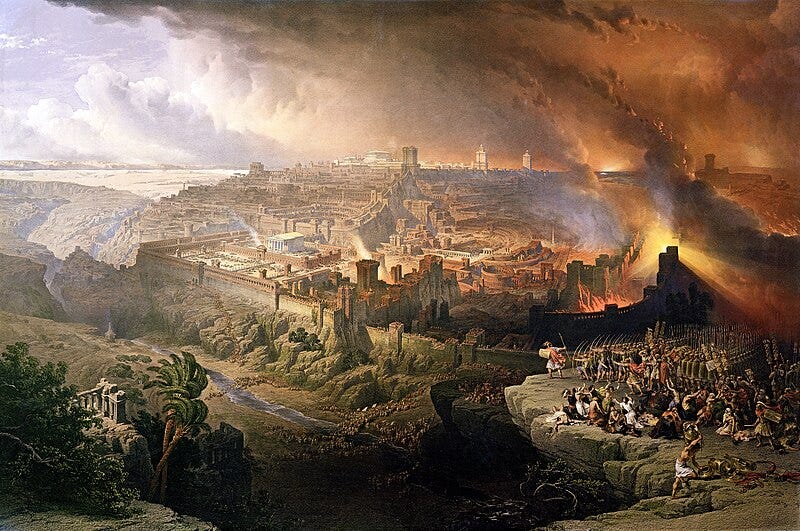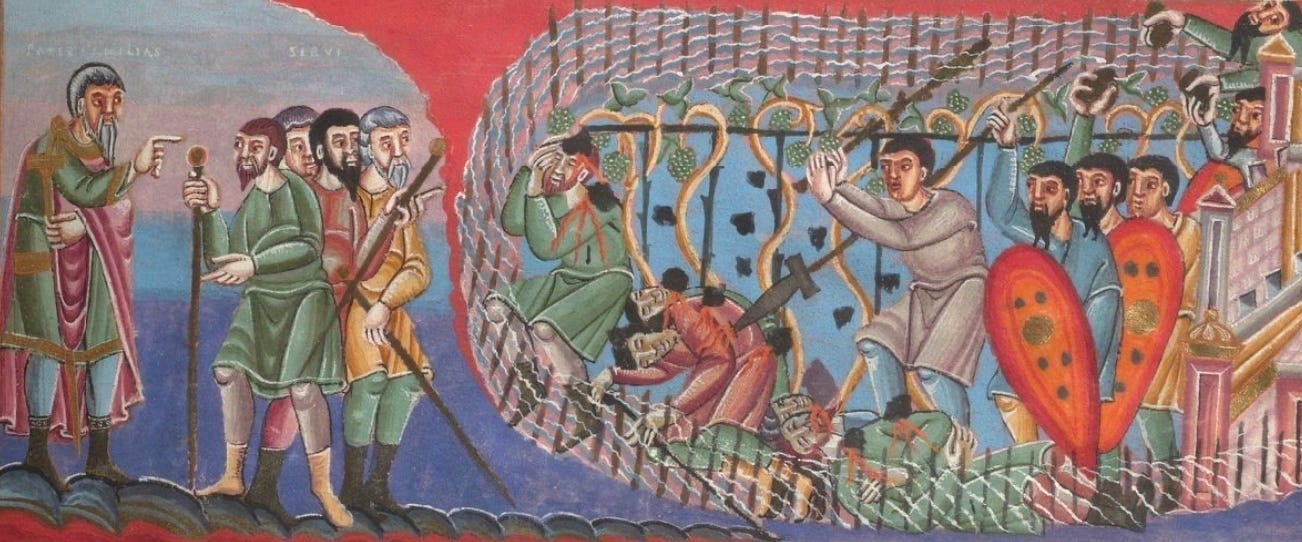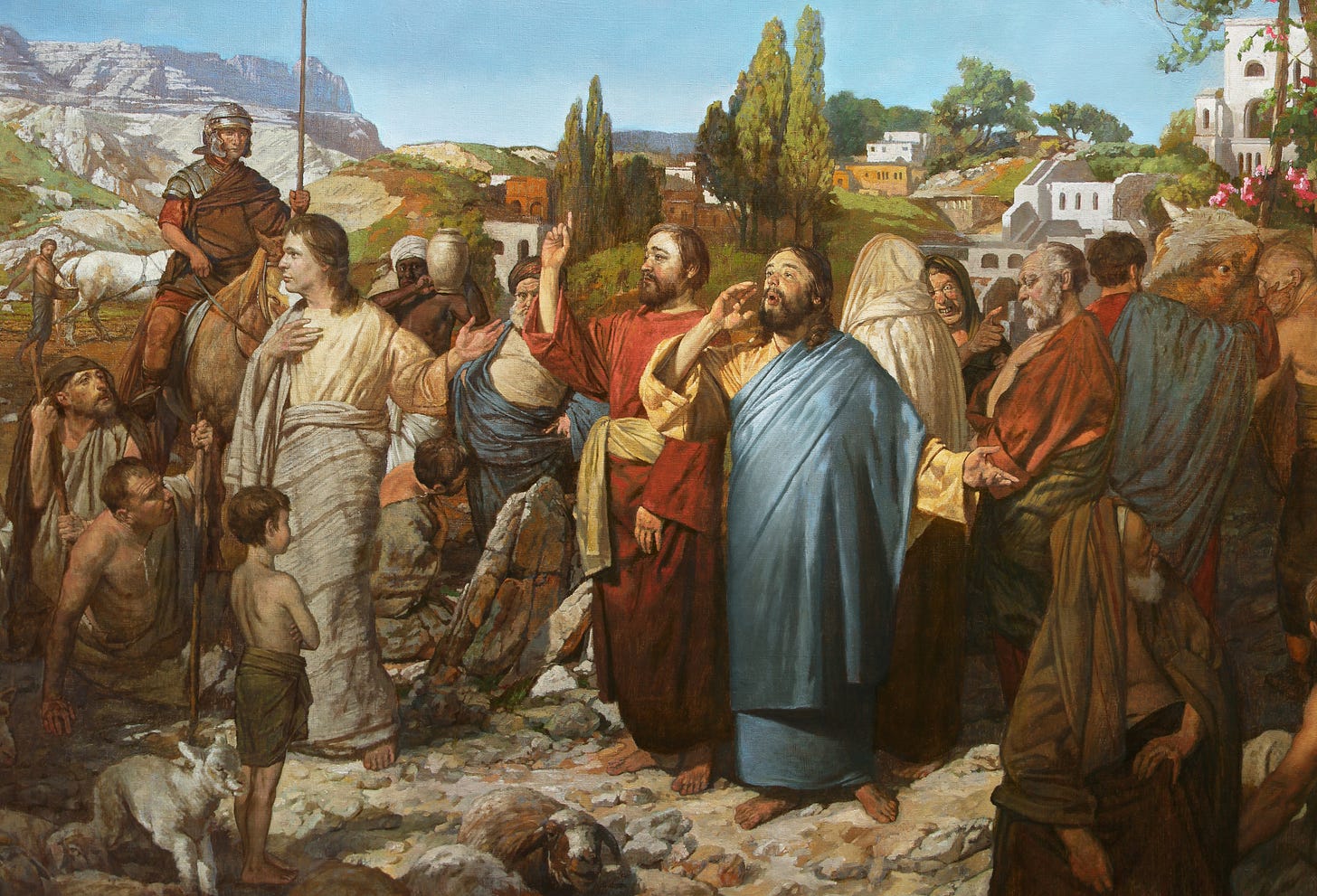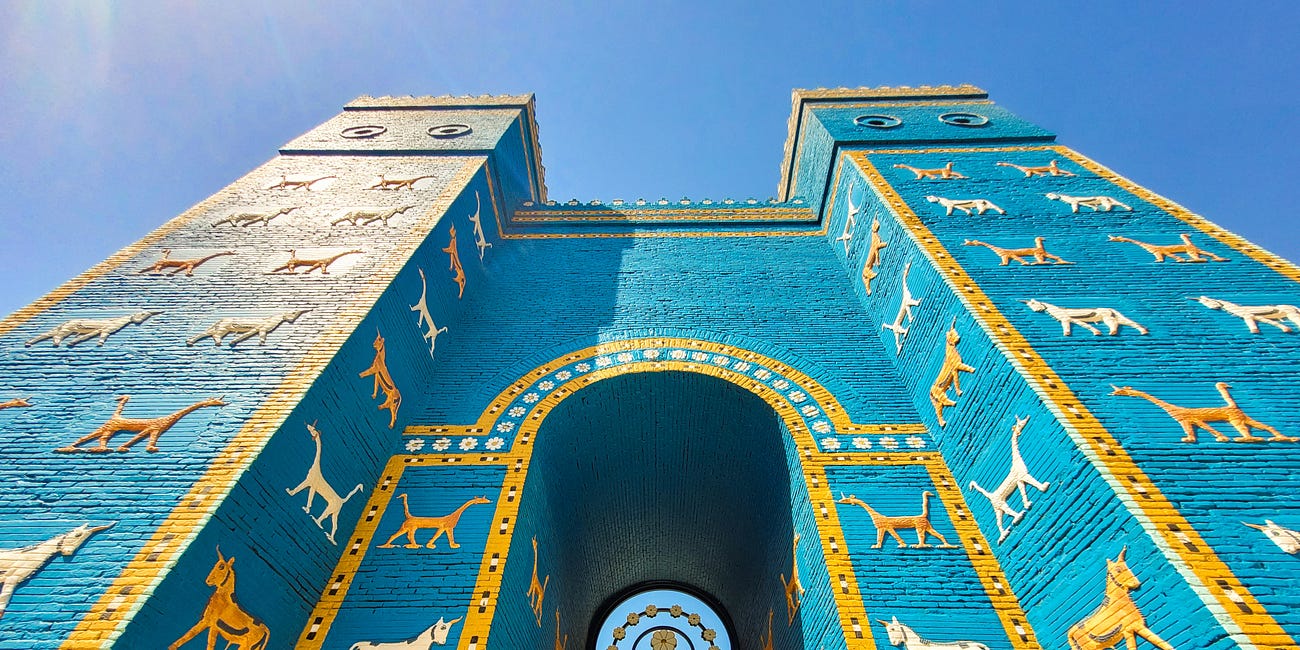Deciphering the Clues of Revelation (2)
Who is Harlot Babylon? In this second part, I review some of the Old and New Testament paralles, and discuss how this symbolic woman relates to the many of the themes found in the parables of Jesus.
This is Part 2 of a 5-part series. Part 1 | Part 2 | Part 3 | Part 4 | Part 5
In my last article, I argued that, because there are so many different interpretations of the Bible in general and Revelation in particular, we shouldn’t simply assume that our personal view, or interpretive tradition, is automatically correct. Instead, we should approach the text with humility, applying critical tests even to our own beliefs and assumptions as we continue to read and interact with Scripture.
When it comes to the book of Revelation in particular, I argued that “we’ll have a better chance of unlocking its meaning if we come to it with 1) a ‘better than average understanding of the Old Testament, 2) a solid grasp of the Gospels and New Testament Epistles, and 3) if we attempt to interpret the words (and grammar) of a given passage in the light of their original first-century context.”
As a way of illustrating the first point, I argued that several fascinating parallels can be shown to exist between various Old Testament passages and the character of Harlot Babylon who appears in several chapters of the book of Revelation (Rev 14:8; 16:19; 17:1-18; 18:1-24; 19:2-3), and who ends up being contrasted with the New Jerusalem which descends from heaven, “prepared as a bride for her husband” (Rev 21:2). Here are some of the parallels I highlighted:
Babylon the Great is similar to Queen Jezebel
Compare 1 Kgs 16:29-30 and 21:25 with Rev 2:20, 18:7; 2 Kgs 9:30 with Rev 17:4; 2 Kgs 9:22 with Rev 17:1 and 18:23; 1 Kgs 18:4-13 with Rev 17:6 and 18:24; 2 Kgs 9:7 with Rev 18:24 and 19:2; 2 Kgs 9:33 with Rev 18:21; 2 Kgs 9:35-37 with Rev 17:16).Babylon the Great is similar to adulterous Israel in Isaiah’s opening chapter
Compare Is 1:7 with Rev 17:16; Is 1:10 with Rev 11:8; Is 1:13-15, with Rev 17:4; Is 1:21-24 with Rev 19:2.The attire of Babylon the Great is similar to the garment of the high priest
Compare Ex 28:1-38 with Rev 17:4-5. Note that in Mt 20:17-19, Jesus warned his disciples that “the chief priests would deliver the Son of Man to the Gentiles.”

In each of these cases, the parallel suggests that Harlot Babylon is a composite character who represents, not Gentile Rome, but the unrepentant leaders of Jerusalem. I also argued that there happen to be a number of significant parallels found in the New Testament Gospels, including the following:
Jesus alluded to the fall of Babylon when describing Jerusalem’s destruction
Compare the language of Is 13:10-13 with Mt 24:29.“In her was found the blood of prophets and saints” (Rev 18:20-24).
There is no record that Rome ever persecuted any of Israel’s prophets, but Jesus famously told the Jerusalem authorities that “the blood of all the prophets, shed from the foundation of the world, [will] be charged against this generation (Lk 11:46-51; cf. Mt 23:34-35).Jesus warned of “the abomination of desolation” (Mt 24:15, Mk 13:14)
Jesus applied the prophecy of Dan 9:26-27 to the destruction of Jerusalem that occurred at the end of that generation (Mt 24:34; compare also Dan 12:4 with Rev 22:10). However, this language connects us to Harlot Babylon who is full of “abominations” and is made “desolate” by the beast (Rev 17:4-5, 16, cf. Mt 23:27-28, Lk 19:41-44).
Additional Parallels in the Parables Jesus
Thus far, I’ve been reviewing the material I outlined in my first article. Now I’d like to discuss some of the parallels between John’s depiction of Babylon the Great and some of the statements that Jesus made in his parables. For example, in the parable of the wicked tenants (Mt 21:33-45, Mk 12:1-12, Lk 20:9-18), Jesus spoke of a man who planted a vineyard and leased it to others. When he later sent his servants to collect his fruit, they were beaten and mistreated by the tenants. When this happened repeatedly, the man finally sent his son, but the tenants said to themselves, “This is the heir. Come, let us kill him and have his inheritance.” After telling this parable, Jesus then asked his hearers, “When therefore the owner of the vineyard comes, what will he do to those tenants?” In Matthew’s version, the people respond by saying, “He will put those wretches to a miserable death and let out the vineyard to other tenants who will give him the fruits in their seasons.” Jesus then concludes with the words of Psalm 118:
Have you never read in the Scriptures: ‘The stone that the builders rejected has become the cornerstone; this was the Lord’s doing, and it is marvelous in our eyes?’ Therefore I tell you, the kingdom of God will be taken away from you and given to a people producing its fruits. And the one who falls on this stone will be broken to pieces; and when it falls on anyone, it will crush him (Mt 21:42-44)
Jesus, of course, is the rejected son who ends up being thrown out of the vineyard and killed (cf. Jn 19:16-17, Heb 13:11-13, Rev 11:8). He’s the rejected cornerstone (Ps. 118:22) and the stone of offense who causes men to stumble (cf. Is 8:14, Rom 8:33, 1Pt 2:8). He’s the stone “cut by no human hand” that destroys all the idols and towers built by man (Dan 2:34-35, 44-45), whether in Babylon, Rome, or even the city of Jerusalem itself (Mt 21:44, 24:2; Lk 21:20-24), just as Simeon prophetically announced to Mary soon after Jesus was born: “This child is appointed for the rise and fall of many in Israel” (Lk 2:34).
Now, here are some of the notable parallels that exist between this parable and Babylon the Great:
The tenants murder the owner’s servants and son (Mt 21:35-39)
According to Rev 18:24, “In her was found the blood of prophets and of saints, and of all who have been slain on earth.” (cf. Rev 17:6). Also, in Rev 11:8 “the great city” is identified as the place “where the Lord was crucified.”The owner promises to “destroy” (ἀπόλλυμι) those men (Mk 12:1)
In Rev 19:2, God judges the great prostitute by “avenging on her the blood of his servants.” According to Rev 18:14, Babylon’s “splendors will be destroyed (ἀπόλλυμι), never to be found again!”The owner then promises to “give the vineyard to others” (Mk 21:41, 12:9, Lk 20:16)
The marriage supper of the Lamb immediately follows the destruction of Babylon the Great (cf. Rev 18:1 - 19:8), and the bride of the Lamb is identified as “the New Jerusalem” (Rev 21:2).Jesus specifically implicates the chief priests and Pharisees (Mt 21:45)
Compare with Rev 17:4 in which Harlot of Babylon wears a garment similar to that of the high priest, but instead of “holiness to the LORD,” we find the words, “Mother of prostitutes and abominations” on her forehead.
The Parable of the Wedding Feast
In Matthew 22:1-14, Jesus tells the story of a king who gave a great wedding feast for his son. But when he instructed his servants to announce the wedding, those who were invited “paid no attention and went off, one to his farm, another to his business, while the rest seized his servants, treated them shamefully, and killed them.” Greatly angered by this, the king “sent his troops and destroyed those murderers and burned their city.” And, just as we noted above concerning Revelation 18 and 19, immediately following the city’s destruction, the wedding takes place.
Here are some of the notable parallels between this parable and Harlot Babylon:
This parable is about “a king who gave a wedding feast for his son” (Mt 22:2) Compare with Rev 19:7-9, 21:2-9, 22:17.
The servants of the king are killed and mistreated (Mt 22:6)
Compare with Rev 18:24, “In her was found the blood of prophets and saints, and of all who have been slain on earth (cf. Rev 16:6, 17:6, 18:24).The king sends troops to destroy (ἀπόλλυμι) those murderers (Mt 22:7)
God “avenges…the blood of his servants” (Rev 19:2) by destroying the great city (Rev 18). The word ἀπόλλυμι is found in Rev 18:14. In the parable, the king destroyed their city by burning it with fire (Mt 22:7), which is identical to the language of Rev 17:16 and 18:18.“The wedding feast is ready, but those invited were not worthy” (Mt 22:8)
Compare with Rev 22:17 in which “The Spirit and the Bride say, ‘Come.’” Harlot Babylon has not washed her garments in the blood of the Lamb (Rev 7:14, 22:14) because of her lack of faith and repentance. Because she “shed the blood of saints and prophets,” we’re told that God gave her “blood to drink…It is what [she] deserves” (Rev 16:6).
The Parable of the Rich Man and Lazarus
Luke’s Gospel includes a parable about “a rich man who was clothed in purple and fine linen and who feasted sumptuously every day” (Lk 16:19-30). Back in chapter 7, Luke quoted Jesus as saying, “Those who are dressed in splendid clothing and live in luxury reside in palaces” (Lk 7:25), which could be a clue that this parable refers not to a rich man in general, but a royal dignitary in particular. As the story continues, we discover that the man lives in a gated home (Lk 16:20) and has a father, and five brothers (Lk 16:26-27). But as it happens, the high priest at the time of Jesus, Joseph Caiphas, lived in a gated palace (cf. Jn 18:15-16, Mt 26:3) that he shared with his father-in-law, Annas. According to Josephus, Annas also happened to have five sons of his own (Ant. 18:95, 20:198).
Now, if you’re familiar with the parable, there is a complete role reversal in the afterlife. Whereas Lazarus is comforted, the rich man is tormented. When the rich man asks Abraham to send Lazarus to warn his father and five brothers about their fate, he is told, “If they do not hear Moses and the Prophets, neither will they be convinced if someone should rise from the dead” (Lk 16:30-31). But, surprisingly, these words connect us to actual historical events recorded by John. After a man named “Lazarus” was raised from the dead, we’re told that the chief priests made plans to put both Jesus and Lazarus to death (Jn 11:53, 12:10-11). In other words, it appears that this parable included a prediction of something real that was just about to happen. After Jesus raised “Lazarus” from the dead, the chief priests continued in their unbelief and actually became even more wicked and murderous.
This parable is about “a rich man clothed in purple and fine linen” (Lk 16:19).
This is similar to the description of both the high priest’s attire (Ex 28:5) as well as that of Harlot Babylon who is “clothed in fine linen, in purple and scarlet…” (Rev 18:18). The rich man also lived in a gated home and had a father and five brothers, which matches what we know of Caiphas.The man feasted sumptuously every day and was later tormented (Lk 16:19, 23)
Since she “glorified herself and lived in luxury,” she was later “burned up with fire” (Rev 18:7-8; compare also Lk 16:22-24 with Rev 21:8).
“What is exalted among men is an abomination to God” (Lk 16:14).
Jesus said these words when a group of wealthy Pharisees ridiculed him, which is what inspired him to tell this parable. In Rev 17:4, Babylon the Great holds a golden cup full of abominations.“…neither will they be convinced if someone should rise from the dead” (Lk 16:31).
Compare with Jn 12:10-11 where the chief priests not only refuse to repent and believe, but also plan to put Lazarus to death. In Rev 17:6, the harlot is “drunk with the blood of the saints, the blood of the martyrs of Jesus.”
CLICK HERE to begin reading Part 3 of this article series.
Shane Rosenthal is the founder and host of The Humble Skeptic podcast. He was one of the creators of the White Horse Inn radio broadcast which he also hosted from 2019-2021, and has written numerous articles for various sites and publications, including TableTalk, Logia, Core Christianity, and others.
FOR FURTHER STUDY
Articles
Deciphering the Clues of Revelation (Pt 1), (Pt 2), (Pt 3), (Pt 4), (Pt 5), Shane Rosenthal
A Pre-70 Date for Revelation? Shane Rosenthal
A Pre-70 Date for the Gospels & Acts, Views Across the Centuries
The Date of John’s Gospel, Revisited, Shane Rosenthal
The Implications of 70 AD, Shane Rosenthal
New Evidence for a Historical Moses, Shane Rosenthal
The Golden Calf, David Rohl
The Identity of the Beloved Disciple, Shane Rosenthal
Water Into Wine, Shane Rosenthal
Luke’s Key Witness, Shane Rosenthal
Audio
Decoding the Prophecies of Daniel, Humble Skeptic #68
Babylon, Humble Skeptic #66
Jacob’s Ladder, Humble Skeptic #63
Christian Narcissism, Humble Skeptic #67
Did the Exodus Ever Happen? Humble Skeptic #69
Are The Gospels History or Fiction? Humble Skeptic #52
Jewish Views of the Messiah, Humble Skeptic #38
The Intersection of Church & State, Humble Skeptic #53
Books
The Last Days According to Jesus, R.C. Sproul
End Times Bible Prophecy: It’s Not What They Told You, Brian Godawa
Revelation: Four Views, Steve Gregg
The Divorce of Israel, Kenneth Gentry, Jr.
Before Jerusalem Fell, Kenneth Gentry, Jr.
Redating the New Testament, John A.T. Robinson
Rethinking the Dates of the New Testament, Jonathan Bernier
The Antichrist & The Second Coming, Duncan McKenzie
Proof of the Gospel, Eusebius of Caesarea
Son of Man in Early Jewish Literature, Richard Bauckham
A Commentary on the NT from the Talmud, John Lightfoot
The Parousia, James Stuart Russell — FREE
The Early Days of Christianity, F.W. Farrar — FREE
Babylon
Wherever we find references to Babylon in the Bible, we’re frequently reminded of man’s failed attempt to ascend to the heavens. This is due in part to the fact that “Babel” and “Babylon” happen to b…







